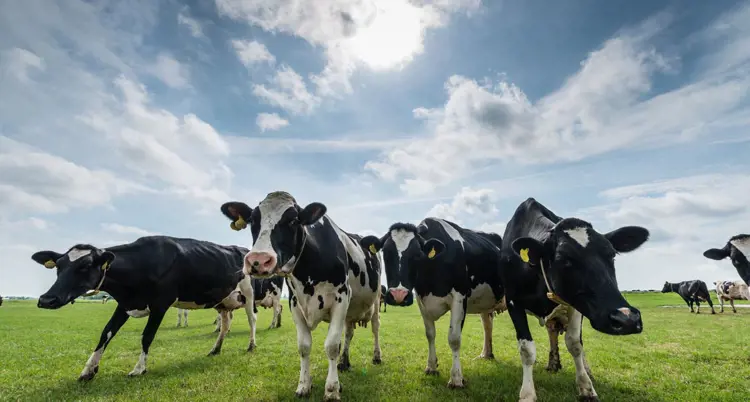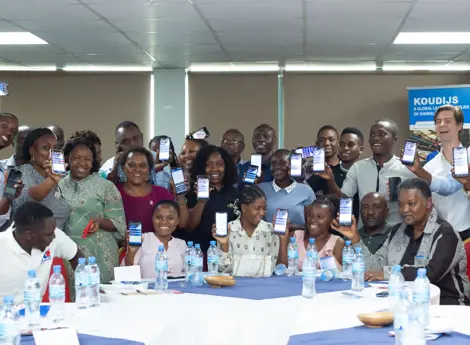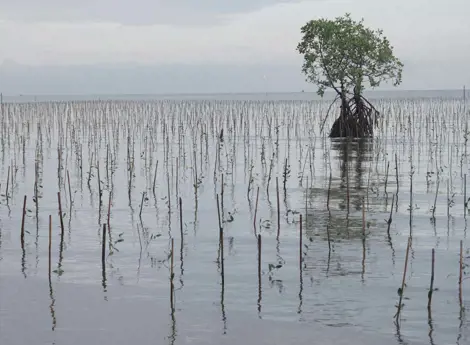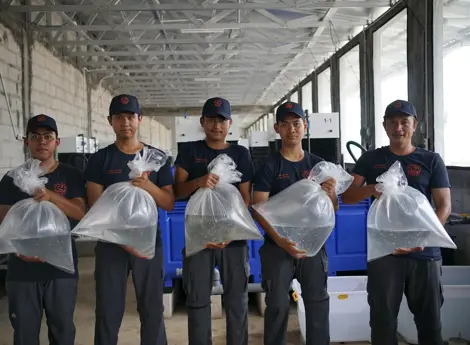Zero measurement: the starting point for reducing our carbon footprint
By 2050 the global population will have grown to 9.8 billion people. Producing enough safe, healthy, and affordable food for this growing population will lead to a 56 percent increase in the global demand for food and an increase of nearly 70 percent for animal-based foods.

Climate change
At the same time climate change is becoming one of the biggest issues associated with livestock production. The livestock production chains that we are a part of are responsible for 14,5 percent of the global emissions of greenhouse gases (GHG). Ruminants account for 80 percent of the total GHG emissions associated with livestock production. The Carbon Footprint (CFP) of a product depicts the number of CO2-equivalents that are emitted per kg of product produced (meat, fish, dairy and eggs), considering all stages of production, based on a Life Cycle Analysis (LCA).
Reduction of CO2-equivalents
Pressure to reduce the emission of GHG and the CFP of livestock production is rising. Fuelled by the Paris Agreement, a legally binding international treaty on climate change, most countries have adopted the goal to limit global warming to well below 2, preferably to 1.5 degrees Celsius. To achieve this long-term temperature goal, countries aim to reach global peaking of greenhouse gas emissions as soon as possible to achieve a climate neutral world by mid-century. To reach the ambitions laid down in the Paris Agreement many countries are working on policies that aim to lower the amount of GHG emitted by different economic sectors – the most popular method to achieve this goal seems to be the reduction of CO2-equivalents.
Reducing our CFP
Given the fact that the production of livestock is responsible for a significant part of global GHG emissions we expect that our supply chain partners, governments and NGO’s will ask us to decrease the footprint of our products – by changing some of the raw materials we use, source locally where possible, increase the use of by products and make our production and logistical process more efficient where possible – and introduce technical solutions – in the form of additives – that further reduce the emission of GHG on the farm when they become available. We believe that it is important to be able to meet the demands of our supply chain partners when it comes to reducing our CFP.
Global Green Goals
Sowing the seeds for future generations
Carbon Footprint ambition De Heus
The animal nutrition department has started a project that aims to enable us to optimize on and deliver CFP values (farm gate level) for our feeds for all business units in all species, considering the origin of the raw materials that we use and possibly develop a model per species to quantify the effect of different factors on the CFP per kg of end product (milk, meat, eggs, fish), that could be used to advise our customers on the steps they can take on their farm to further reduce the CFP of their products. “We strive to make this information available to our customers. This information can be of interest to our livestock farmers for their business operations, but it is also interesting for us to gain insight into the steps we can take to reduce our emissions”, says Karst Mulder, project manager CO2 ambition.
Zero measurement
Mulder: “We defined CFP as one of the Global Green Goals within De Heus: In 2022 De Heus Animal Nutrition will be able to calculate, formulate and set goals for the CO2 footprint of its products, carrying out a group wide CO2 zero measurement in 2023 and being equipped to provide customers tailored on the farm advice to reduce their own CO2 footprint. The zero measurement will give us the information we need to define a concrete ambition for lower emissions'.”
Joining forces worldwide
“In the Netherlands we have data already available, since we need it for our dairy Planet Proof customers. The data can be used for poultry and swine as well. The values are based on a market mix for the entire compound feed sector in NL (Nevedi). In future we use our own data. Based on this pilot we will improve our working procedure and our IT systems and then proceed with other countries. We are not there yet, but powering progress is on its way. We experience a great advantage because we are active worldwide. This gives us the opportunity to join forces. To create and implement steps towards more sustainable business operations,” concludes Mulder.





